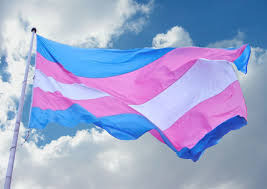Transgender, or trans, does not mean just one thing but rather is an umbrella term for people whose gender identity or expression is different from those typically associated with the sex assigned to them at birth (e.g., the sex listed on their birth certificate). We have updated this article, originally written in early 2014 in response to the mistakes made during Katie Couric’s interview with Laverne Cox and Carmen Carrera and Piers Morgan’s interview with Janet Mock, as it relates to speaking with and about transgender people. Although we have seen improvements in representation of transgender and gender non-conforming people in the media and workplaces are making great strides in creating inclusive cultures for all employees, there is still much work to be done.
Why is it Important to Get it Right?
Creating a workplace in which all employees feel safe being who they are is not only the right thing to do from a talent management point of view, but it makes good business sense. According to a study from the Harvard Business Review, employees at companies with high levels of diversity are 45 percent likelier to report that their firm’s market share grew over the previous year and 70 percent likelier to report that the organization captured a new market. Furthermore, 23 percent of LGBT adults have switched products or services in the past year because a different company was supportive of the LGBT community. Even if a brand is costlier or less convenient, 71 percent of lesbian and gay people would remain loyal to that brand should they be supportive of and friendly to LGBT issues.
Despite progress that has been made in recent years, according to the 2018 report, A Workplace Divided: Understanding the Climate for LGBTQ Workers Nationwide, the HRC Foundation found that
- 46% of LGBTQ workers say they are closeted at work, compared to 50% in HRCF’s groundbreaking 2008 Degrees of Equalityreport;
- 1-in-5 LGBTQ workers report having been told or had coworkers imply that they should dress in a more feminine or masculine manner;
- 53% of LGBTQ workers report hearing jokes about lesbian or gay people at least once in a while;
- 31% of LGBTQ workers say they have felt unhappy or depressed at work;
- and the top reason LGBTQ workers don’t report negative comments they hear about LGBTQ people to a supervisor or human resources? They don’t think anything would be done about it — and they don’t want to hurt their relationships with coworkers.
To compound the issue, while many companies have made progress in supporting the lesbian, gay and bisexual (LGB) community, the transgender workforce has, in many cases, been overlooked. Transgender people face unique challenges in the workplace that are not always overcome with the same policies or conversations a company might have to resolve issues facing lesbian, gay or bisexual employees. As a matter of fact, according to a National Center for Transgender Equality report
- 30% of respondents who had a job in the past year reported being fired, denied a promotion, or experiencing some other form of mistreatment related to their gender identity or expression; and
- more than three-quarters (77%) of respondents who had a job in the past year took steps to avoid mistreatment in the workplace, such as hiding or delaying their gender transition or quitting their job.
So, where do we start?
Diversity Best Practices proposes we start with the language and tools diversity and inclusion professionals should use when talking with and about transgender people in the workplace.
“Today’s transgender community is an intergenerational landscape with more fluid definitions of gender than my generation’s binary definitions of male and female,” says Stephanie Battaglino, a transgender activist and advocate for transgender rights in and out of the workplace and the founder of Follow Your Heart, LLC. Generational diversity plays a significant role in all diversity and inclusion efforts and conversations about transgender issues are no different. In addition, as more and more companies are working in a global marketplace it is important to take cultural norms into account when talking about transgender issues. For example, while transvestite is not an acceptable term in the US, it is still used in the UK. Like any conversation about difference, it is crucial that D&I professionals are armed with the right language to talk about transgender issues. By no means a definitive list, we offer the following guidelines as a place to start.
Sex and gender are not the same thing. Sex refers to the designation of a person at birth as either “male” or “female” based on their anatomy (e.g., reproductive organs) and/or their biology (e.g., hormones). Gender refers to the traditional or stereotypical roles, behaviors, activities and attributes that a given society consider appropriate for men and women.
Transgender is an adjective and can be shortened to trans. The word “transgendered” should never be used, nor should someone be referred to as “ a transgender.”
Always use a person’s most current chosen name and pronouns whether speaking about this person’s past, present or future. If you do not know, or are uncertain, do not assume – simply ask the person what their preferences are.
To better understand what it means to be transgender, it is important to understand the difference between gender identity – how people perceive their own internal sense of maleness or femaleness, and sexual orientation – which describes who people fall in love with and/or are sexually attracted to. An individual’s gender identity does not necessarily assume a particular sexual orientation. Transgender people can be straight, gay, lesbian or bisexual—gender identity is separate from their sexual orientation.
When asking a trans person about themself use the same boundaries you would use for talking to anyone in the workplace. If you wouldn’t ask a non-transgender person (cisgender) then it isn’t appropriate to ask a transgender person either.
It is irrelevant to a person’s gender identity and public life if they have or have not had any form of surgical procedure, sexual reassignment or otherwise. Therefore, using terms such as “pre-op” and “post-op” to describe a transgender person is offensive and should not be used.
Conclusion
Having a conversation about difference is never easy. And as the definition of diversity evolves into a more complex, multi-dimensional one, these efforts will only become more challenging. “It is important to gauge your company’s own culture before engaging in a conversation about transgender issues or any difference for that matter,” says Battaglino. “Companies need to start with education. This will lead to a foundation of understanding and finally, one hopes, to acceptance. When I came out, my HR department had no idea how to handle it because I was the first. But, there was an openness and willingness on their part to make the transition as comfortable and seamless as possible for me. That foundation ultimately led to me being able to come to work as my true and authentic self.”
Additional Resources:
Human Rights Campaign Transgender Resource Page
National Center for Transgender Equality Understanding Transgender People


